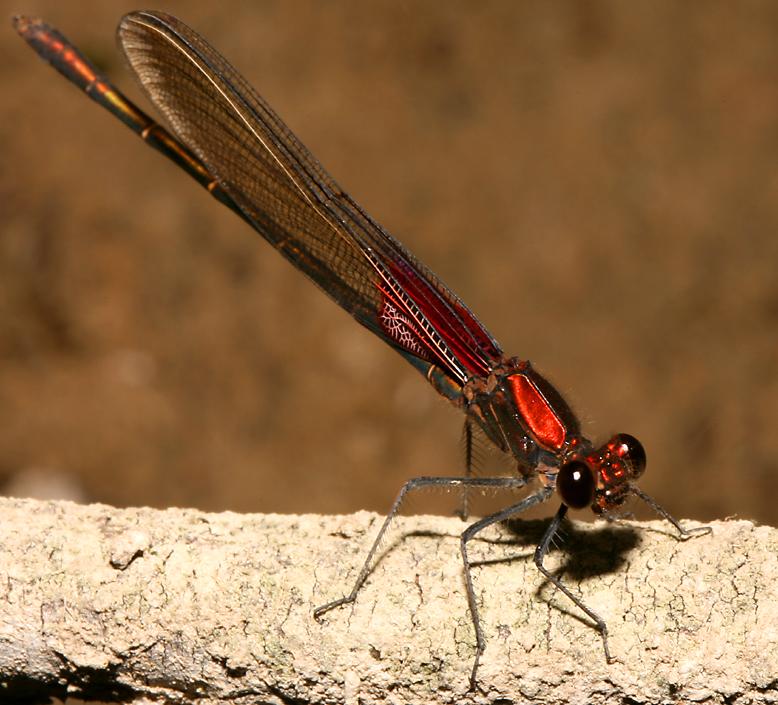Wildlife of the Lower Huron Metropark, Michigan
|
The Lower Huron Metropark is ten miles or so west of Detroit. I've
visited it twice, the first time after the
2005 "Thunder Over Michigan" airshow, and the second after missing
my flight back to Los Angeles after the 2007 "Thunder Over Michigan" airshow.
Located along a stretch of the Lower Huron river, the park is naturally
a great place to find water-loving creatures like this ruby meadowhawk,
a type of dragonfly.
|
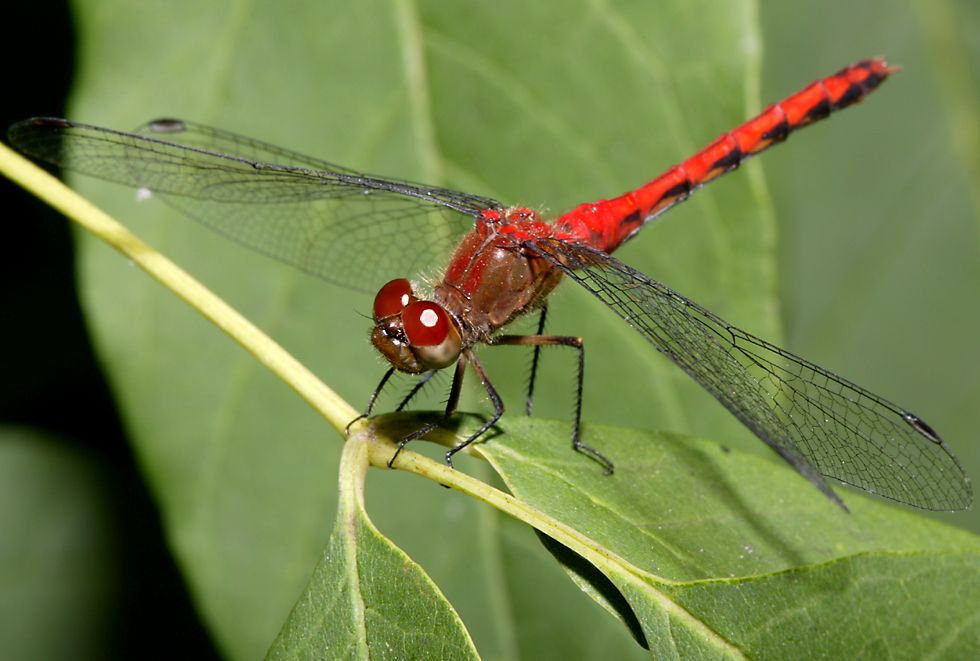 |

|
As far as I can tell, this is another ruby meadowhawk, probably a juvenile.
Young dragonflies are often a different color from the adult, the bodies
becoming richer and darker hued as the dragonfly ages, and the face and
eyes changing color too.
|
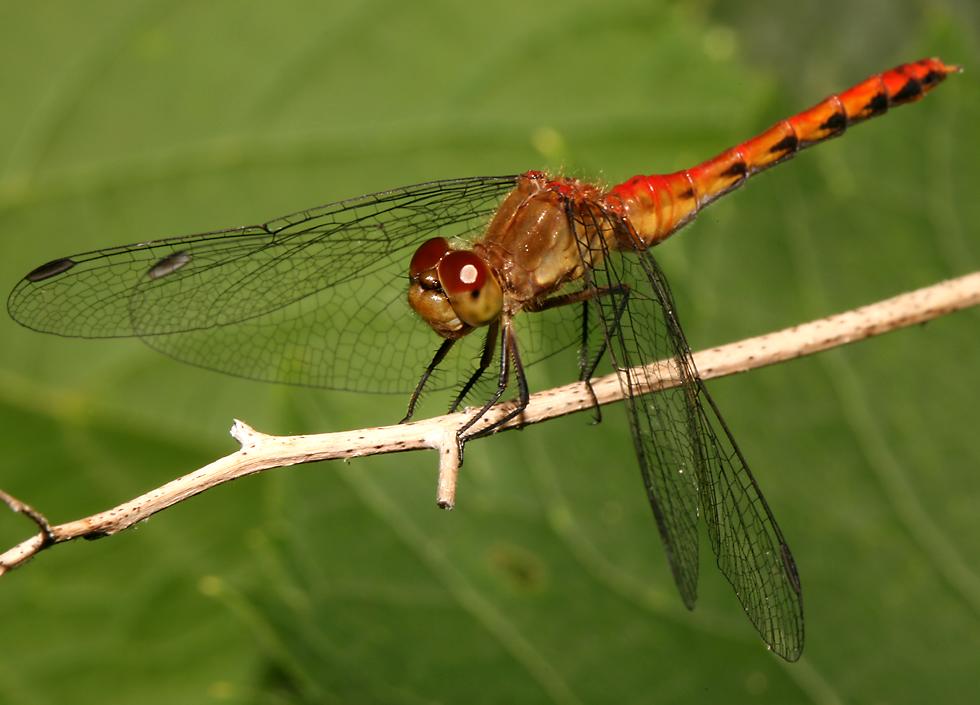 |


|
The male American rubyspot's body is attractive, but it's the bright red base
of their wings which give them their name. It's usually next
to impossible to get a photo of the insides of their wings, since they
normally sit with them closed, however I was lucky enough to observe a
pair mating, and the male graciously consented to holding his wings open
while holding the much more drab female.
|
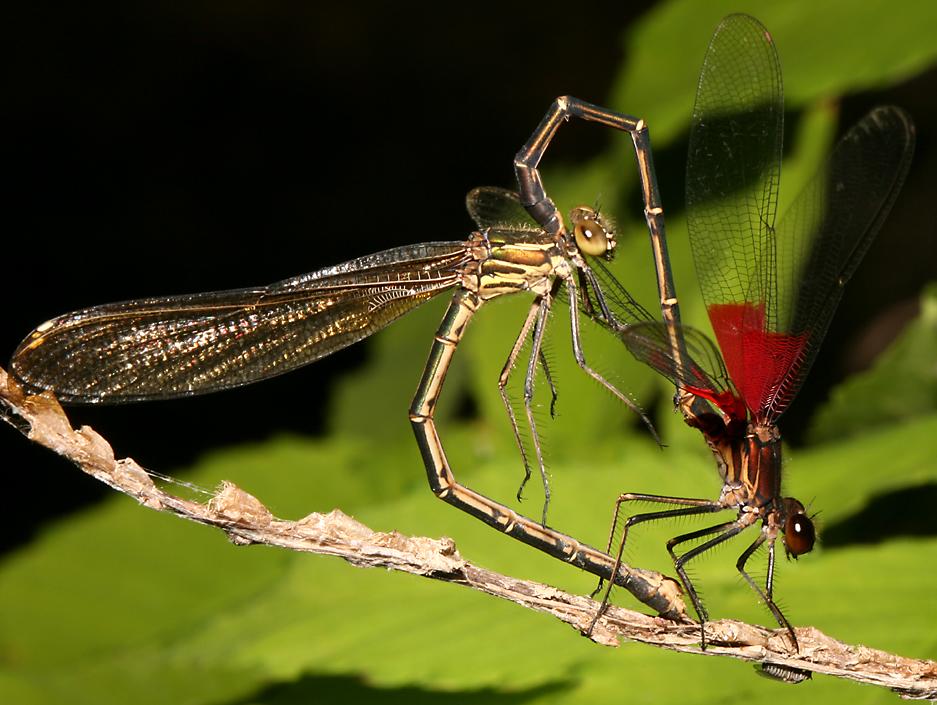 |

|
The American rubyspot is beautiful, but I felt even luckier when I found another
even more spectacular damselfly in the very same location.
This is a male ebony jewelwing, and when I saw it I decided that if it
took me all day to get at least one decent photo, it would be a day well
spent.
|
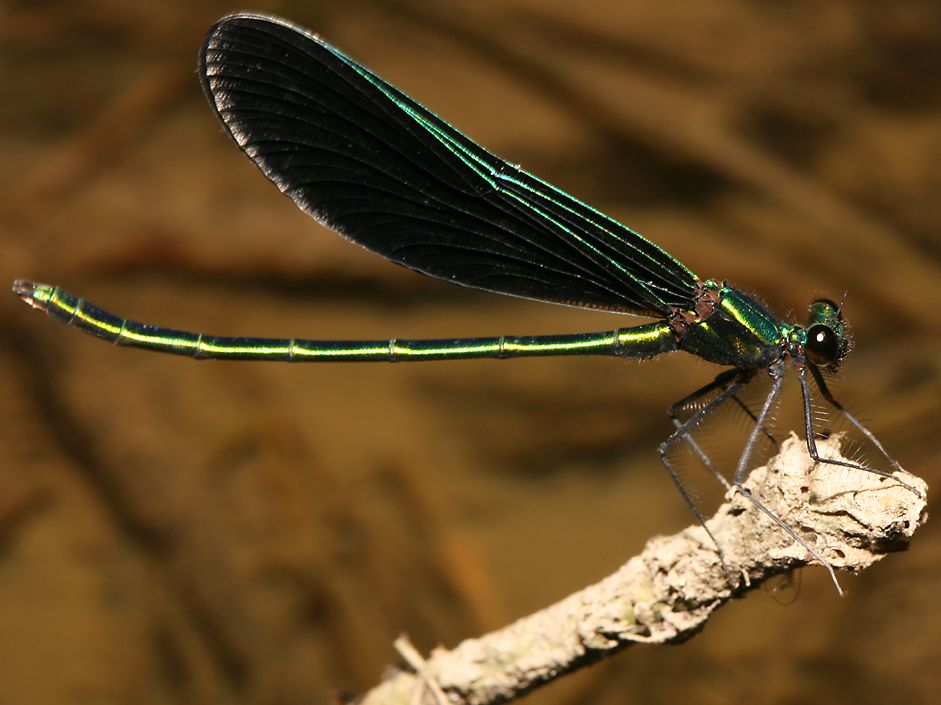
|

|
As it turns out, it took me only 20 or 30 minutes to get a set of good photos.
It's true that the males especially were shy and flew away many times as
I inched closer, standing in a foot of water with my trouser legs rolled
up to keep them dry, but eventually I managed to get some nice shots of
them posing, both with wings closed and open.
|
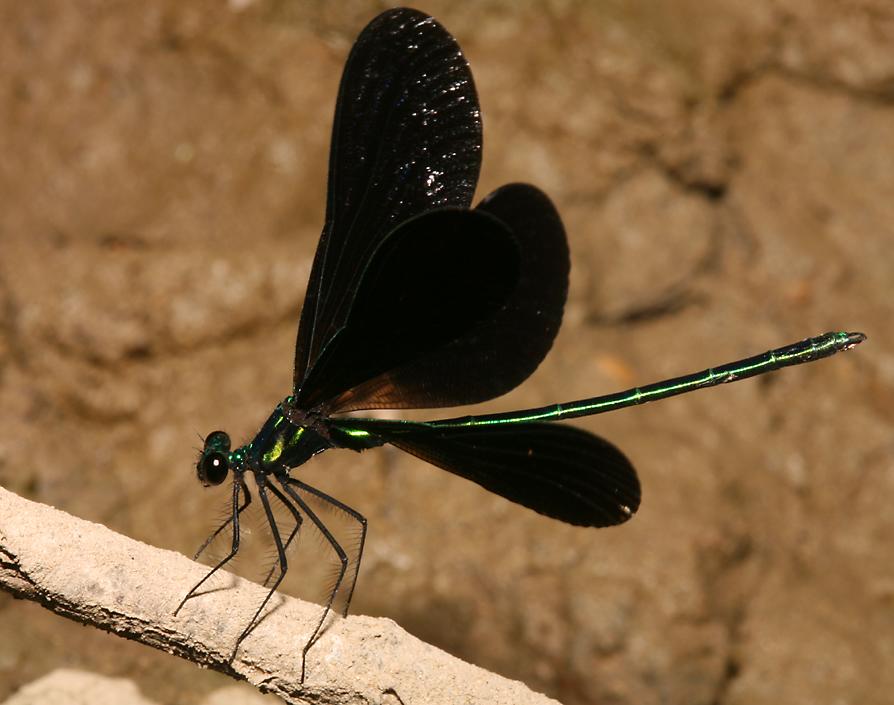 |

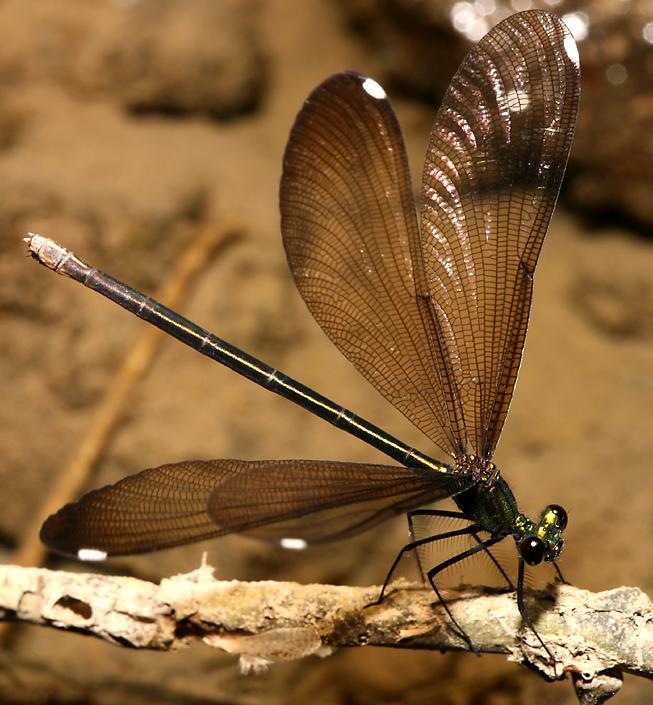
And here's the female ebony jewelwing.
Her metallic green body coloration isn't as bold as the male's, but she's
better looking than the female American rubyspot.
The bright white marks on her wingtips are called stigmata, different dragonflies
and damselflies have stigmata of different colors. It's thought
that they might act as weights to improve the performance of the wings,
just like anti-flutter weights at the ends of the wings of jet fighters. |

|
These dragonflies and damselflies managed to outshine even the local butterflies,
everyone's favorite insects. This small butterfly is a male
Northern crescent, which is in remarkably good condition, perhaps because
it's fairly newly emerged from its cocoon. Northern crescents
can be found across the northern half of the United States, with particularly
strong representation down the entire length of the Rocky Mountains.
|
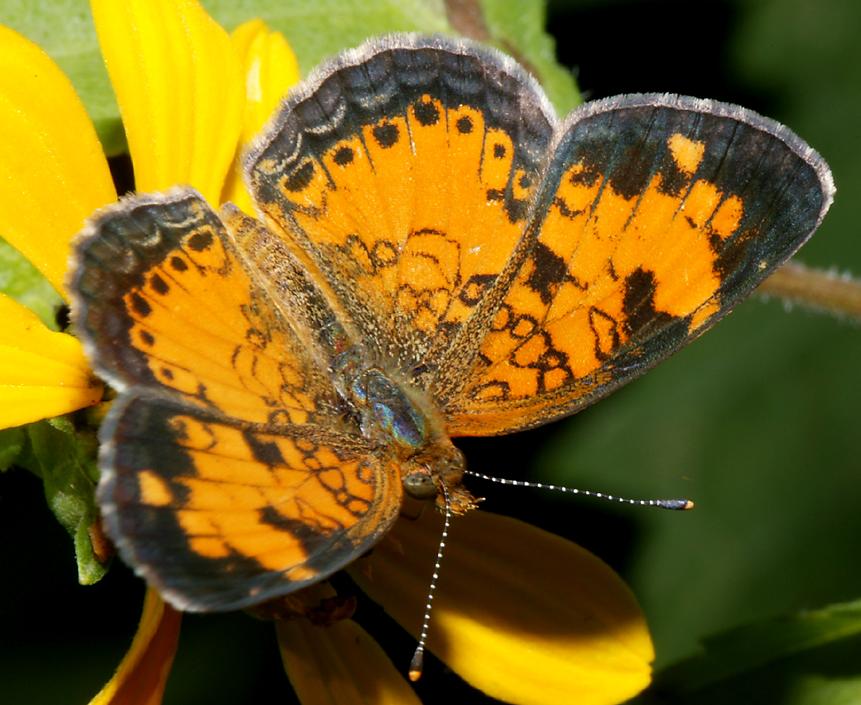 |

|
The Northern crescent might be in excellent condition, but this spicebush swallowtail
has seen a few hard days. Scratched and with a few bits of
wing missing, it's still in fairly good shape; butterflies have such large
wings for their body weight that they can fly with large pieces of their
wings gone. One of the spicebush swallowtail's claims to fame
is that it is the state butterfly of Mississippi.
|
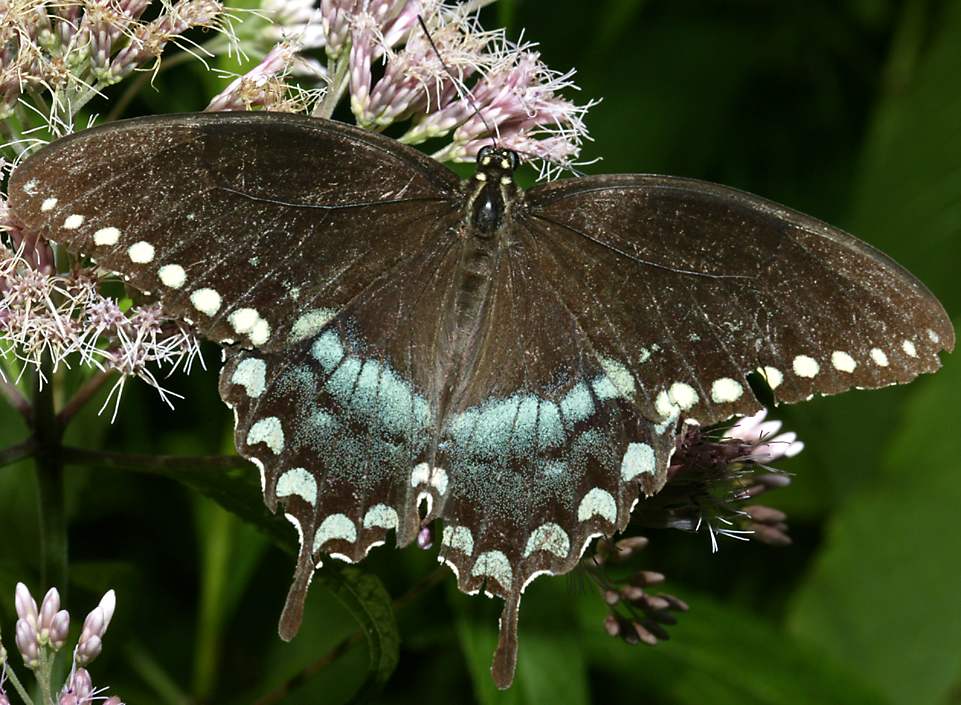 |

|
Swallowtails are a diverse and very attractive family of butterflies with members distributed
all around the world. Some species are very hard to approach,
so I was pleased to be able to get close to this Eastern tiger swallowtail,
feasting on the same type of flowers as the spicebush swallowtail. |
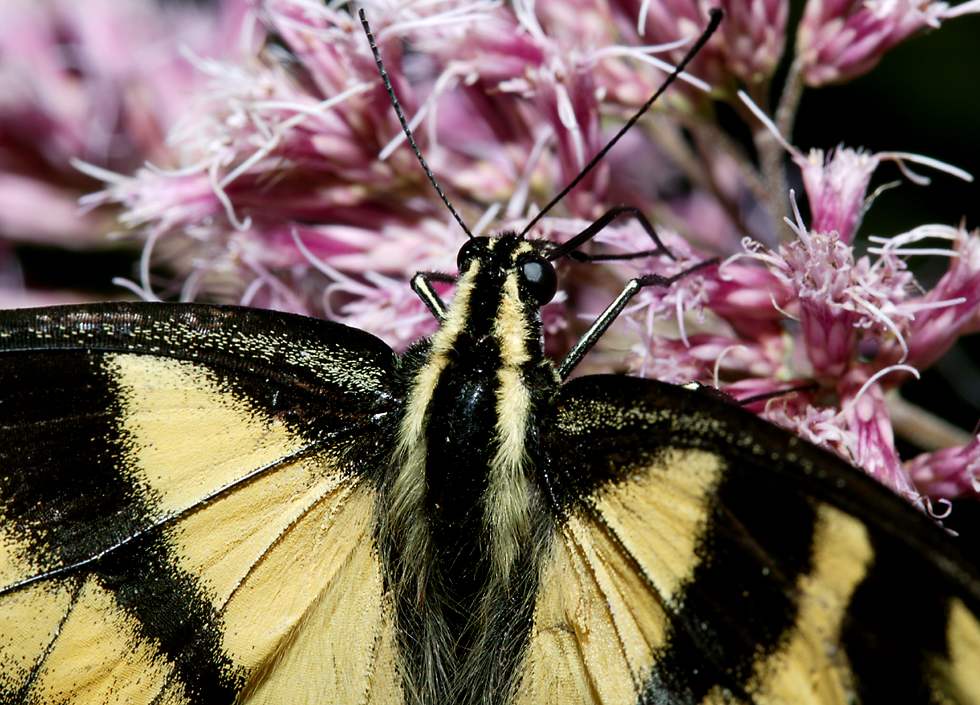 |

|
Where there are butterflies there must also be caterpillars, like this extraordinary-looking
viceroy butterfly caterpillar. The grey areas along its flank
and over its back are supposed to make it resemble a bird dropping, which
is not something that birds want to eat! If a bird sees through
this stratagem then the second line of defense comes into play - long,
thick and spiny projections near the head which make the caterpillar very
difficult to swallow.
|
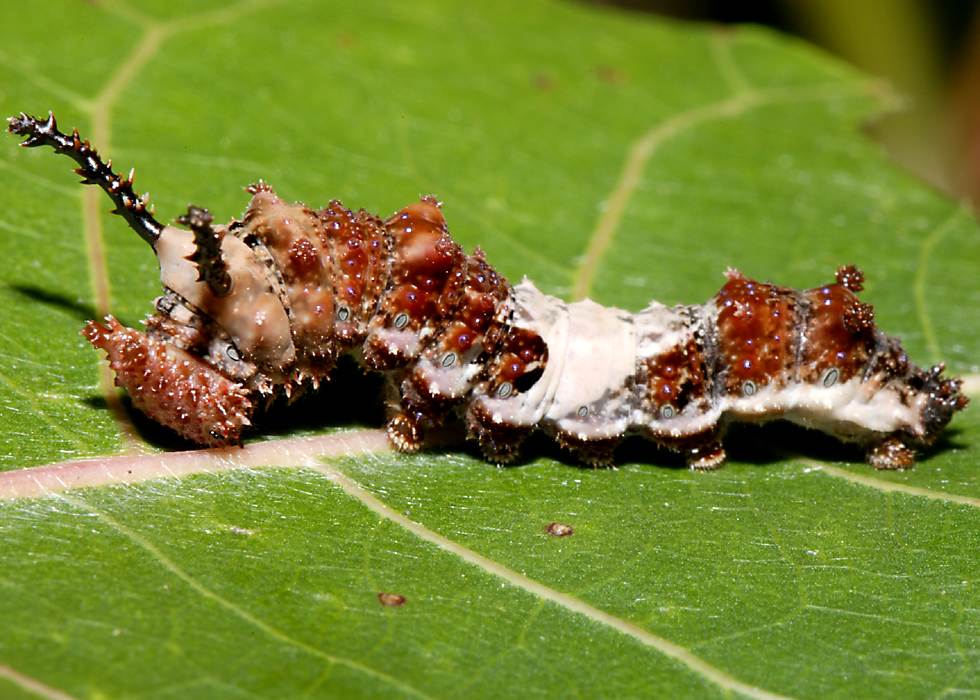 |

|
The viceroy is an attractive butterfly, a very good mimic of the monarch, but
in many other species the caterpillar is much better looking than the adult.
This is particularly true of moths, like this morning glory prominent moth
caterpillar. Prominent moth caterpillars are easily recognizable
by the way they hold their tails up in the air when disturbed, a technique
which is perhaps intended to invite a bird to strike the tail rather than
the head, giving the caterpillar an opportunity to escape.
|
 |

|
It's hard to comprehend why so many caterpillars are brightly colored and patterned,
even those species which are nocturnal, but it certainly makes for interesting
photographs.
|
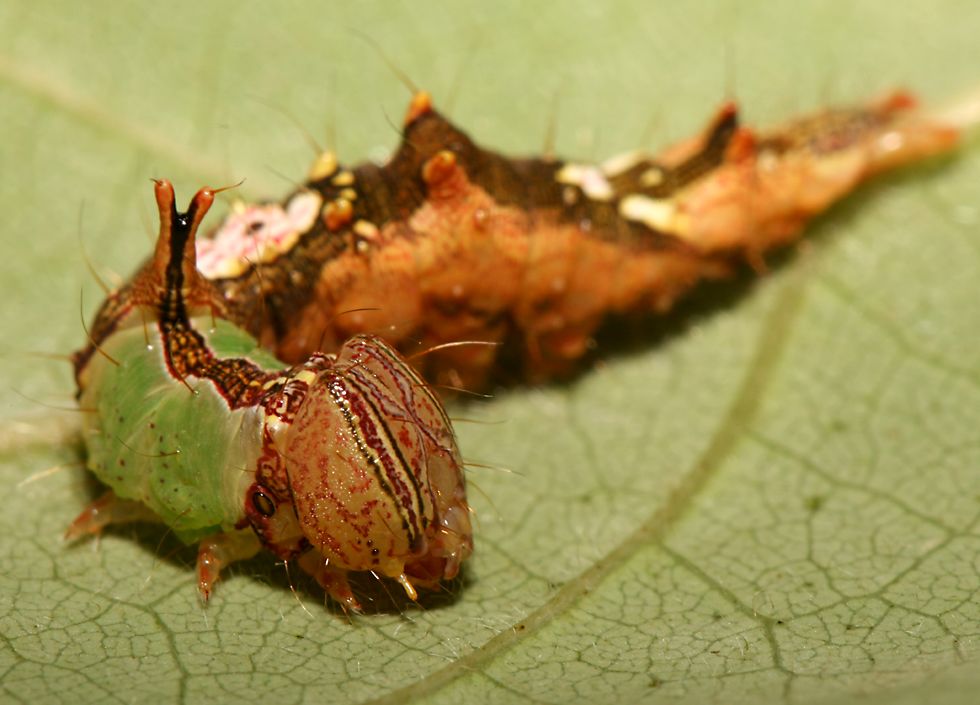 |

|
The park is host to other insects which people don't normally think of as pleasing
to the eye, such as this green metallic bee, flitting rapidly from flower
to flower.
|
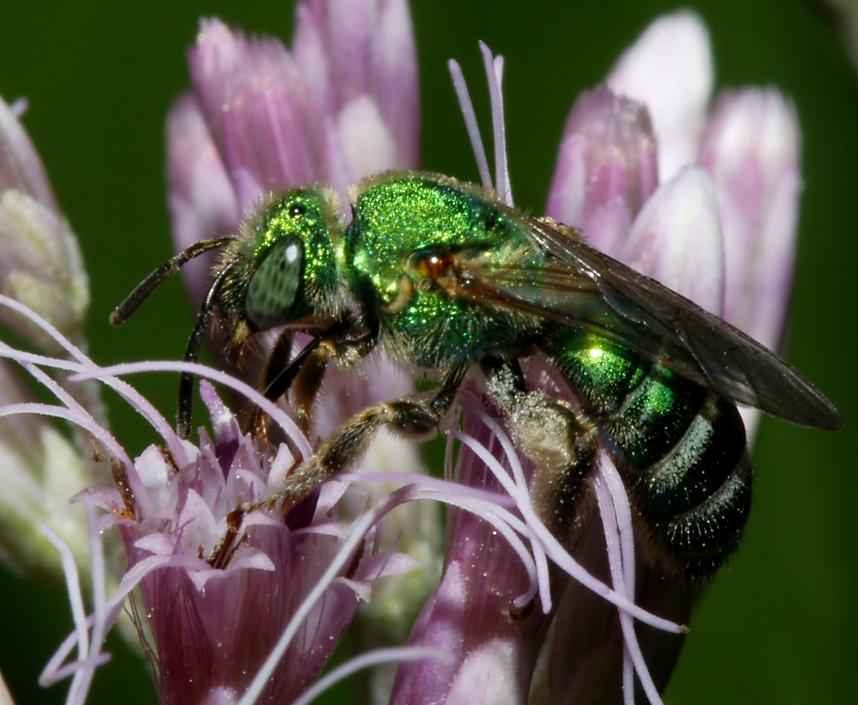 |

|
This wasn't the only variety of green metallic bee on these flowers.
This one has a striped abdomen reminiscent of a wasp, an insect feared
by many predators. Although this species was smaller than the
previous one, they were more aggressive and chased the larger ones around.
|
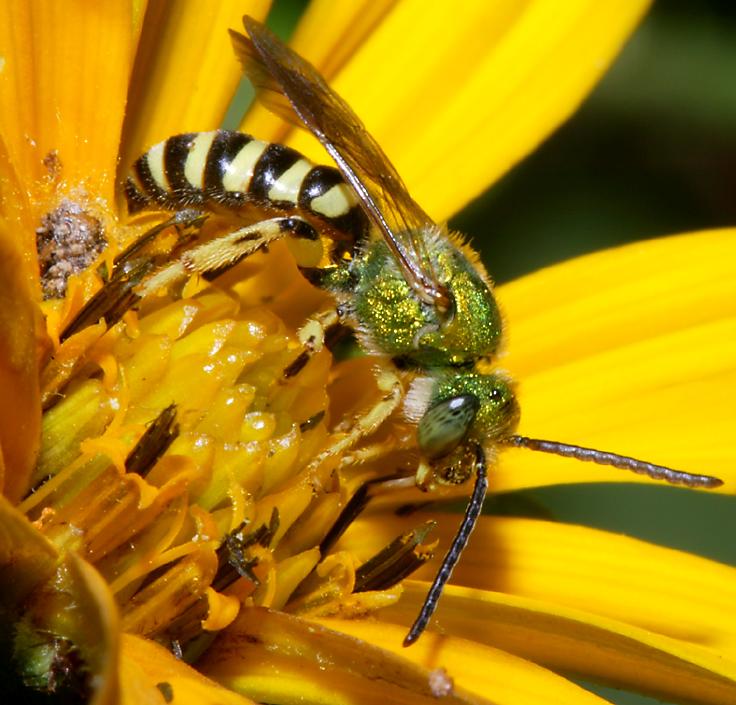
|

|
You might think that a bee could defend itself well enough for most predators,
but they are surprisingly vulnerable to attack by other arthropods, such
as spiders or the jagged ambush bugs that you see here. The
female ambush bugs are obviously totally insatiable, looking for a snack
even when a gallant is intent on winning her heart. These are
"true bugs", you can see the female's sucking mouthpiece stuck into the
bee's neck. In the background you can see another ambush bug
moving in on her kill.
|
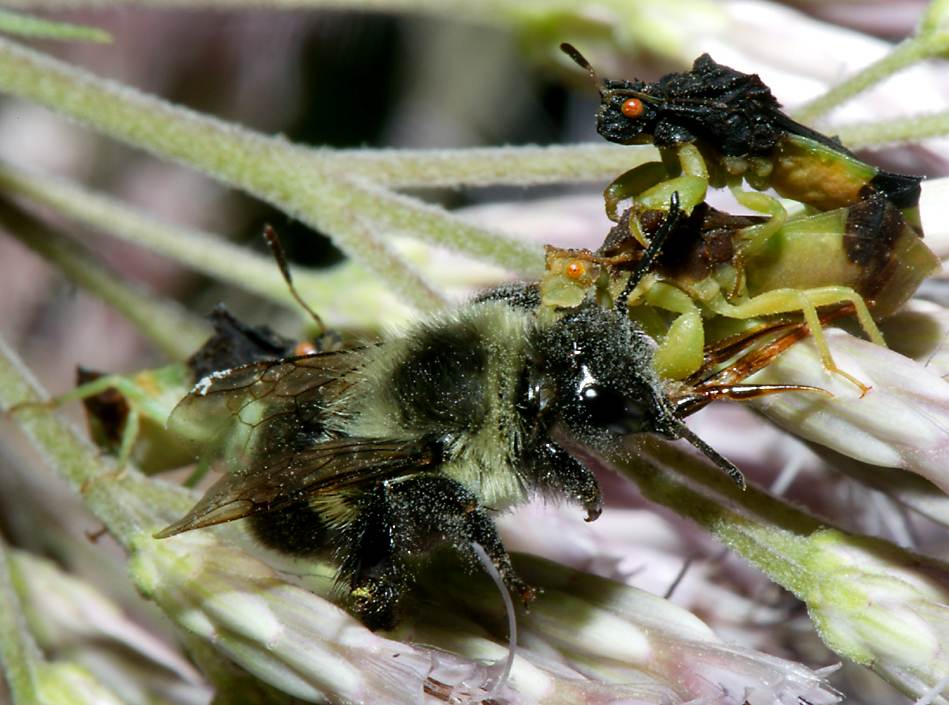 |

|
This juvenile assassin bug is another inhabitant of the weeds along the river.
Unlike the ambush bugs it wanders around looking for something to assassinate,
but the tube or "rostrum" folder under its head is there for the same purpose
- to plunge into its unsuspecting victim.
|
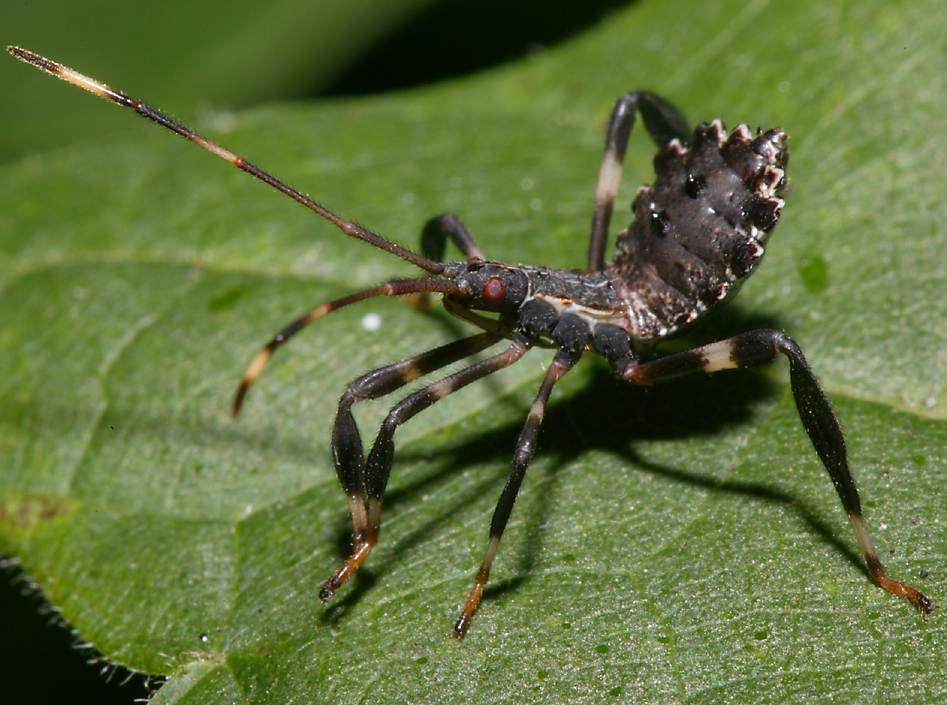 |

|
Not all true bugs are carnivores, many like this scarlet and blue leafhopper
stick their rostrum into plants to suck their juices. Perhaps
the best known of these herbivorous true bugs are the aphids, a family
of insects which isn't known for its beauty.
|
 |

|
There are many leafhoppers around the world
and many
of them are very attractive, but the treehoppers belong to a family
of herbivorous true bugs which is known more
for the
weirdness of their shapes. This two-marked treehopper appears
to be imitating a thorn or other protruberance of the bushes and trees
it lives on. If the disguise doesn't work then the hard spike
will make the bug a lot more difficult for a bird to swallow.
|
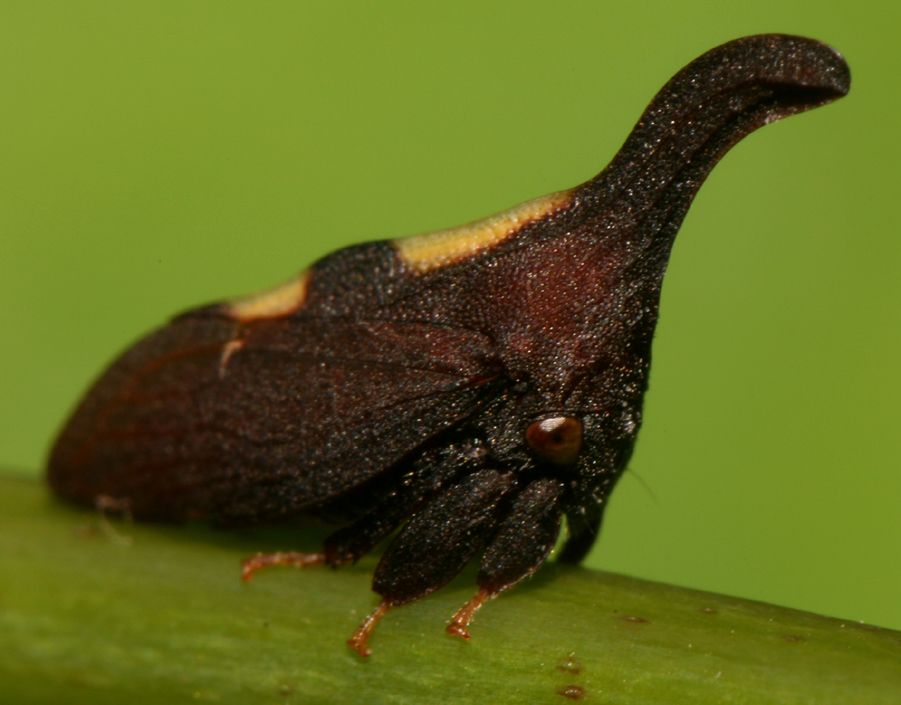
|

|
True bugs are often mistaken for beetles, but the afficianado knows the difference.
These young lovers are indeed Japanese beetles, accidentally introduced
from Japan to the United States, where they are now wreaking the sort of
destruction you can see in the background of this photo.
|
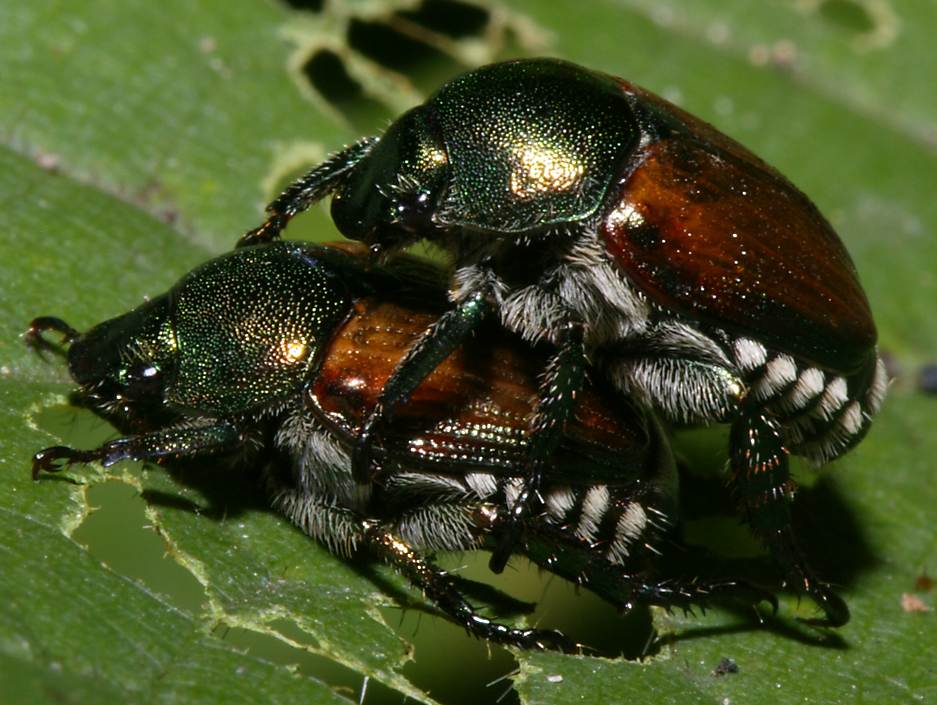 |

|
I found surprisingly few spiders on my visits, perhaps because of the unkind
visitations of the avian population. This one has done its
best to maintain a low profile, hiding out along the main vein underneath
a leaf, colored green to be even more inconspicuous.
|
 |

|
We mostly think of flies as being the victims of predation, but some like
this robber fly are the aggressors, sitting on a leaf until something juicy
passes by, then darting out to catch its prey, sticking its sturdy beak
into the prey's body in order to inject saliva containing enzymes which
paralyze the other insect and liquidize its flesh. There are
around 7100 species of robber fly around the world, most with the same
general appearance including long spiny legs, powerful flight muscles and
a moustache.
|
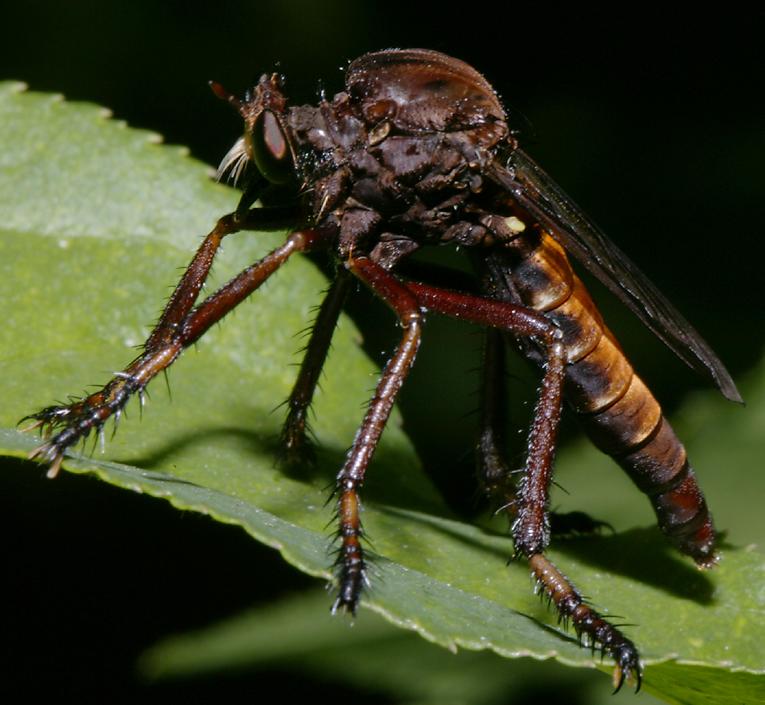 |

|
As anyway in the world, there are always more interesting insects to photograph
than larger animals. However it is possible to see some nice
birds, such as one of my favorite American birds, the cedar waxwing, named
after the waxy red appendages at the ends of some birds' secondary feathers.
It's an attractive bird with its yellow belly and tail-ends, as well as
the crest and black mask on its head.
|
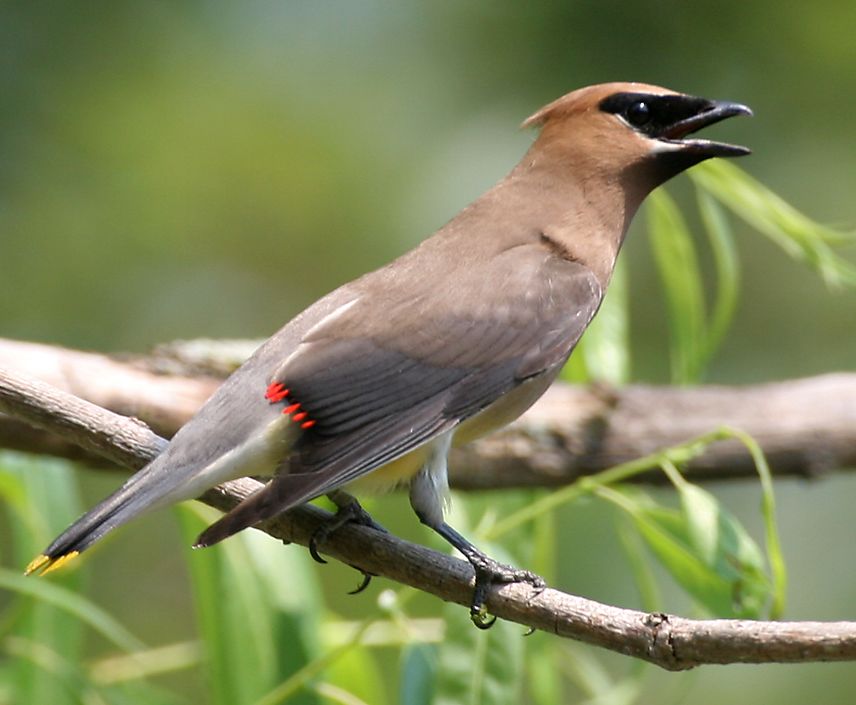 |

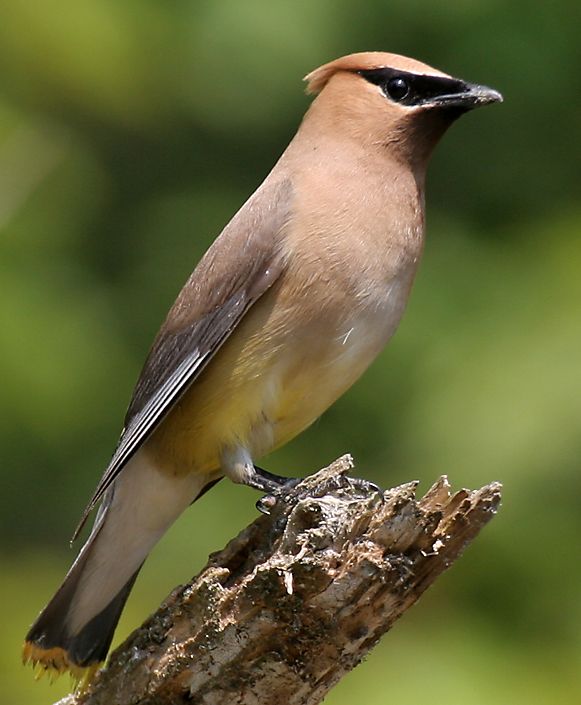
Cedar waxwings are very gregarious, moving around in large family groups
or even in gatherings of unrelated birds.
Their behavior in these groups can be quite comical, with reports of birds
picking petals or small pieces of fruit and passing them from one bird
to another along a crowded branch.
Waxwings are unusual among American birds for having a diet mostly consisting
of fruit, which means that they need to wait until quite late in the season
before having young, since there's no fruit available until summer is well
underway in northern areas like Michigan.
|

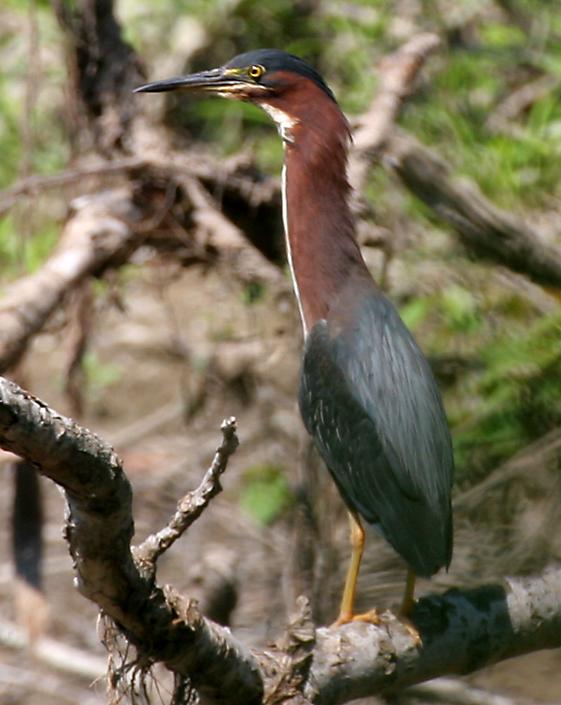
If you walk along the river then it's very likely that you'll see some
herons.
The largest, the great blue heron, mostly don't hang around too long when
people approach, but you might have more luck with this species, the green
heron.
Green herons usually tuck their neck down near their body when they stand
about or fly, but as you can see they're able to stretch that neck a long
way when they want to.
When hunting they spend most of their time on branches above the water,
slowly bending down towards the water when they see prey, and darting their
beak out with that long neck when they strike.
They're said to be very intelligent, even placing feathers or leaves on
the surface of the water and then picking off the fish which come to investigate.
|


